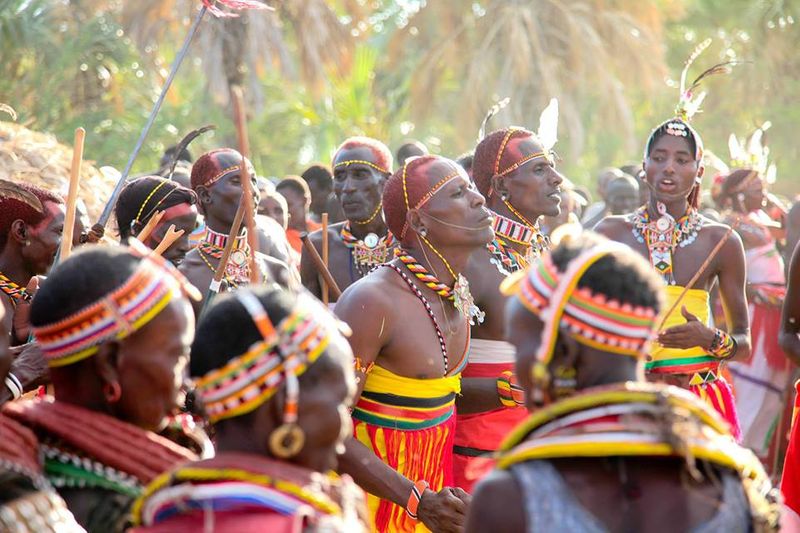
Image Credit: Lake Turkana Cultural Festival
Over a decade ago, the National Museums of Kenya opened the first ever Desert Museum in a little known town called Loiyangalani, in Turkana. That was in June 2008 and in doing so, kicked off a three-day carnival known as the Lake Turkana Festival.
Typically referred to as the Marsabit-Lake Turkana Festival, this three-day celebration highlights the unique cultural differences and similarities of the various communities that live in the Northern frontier.
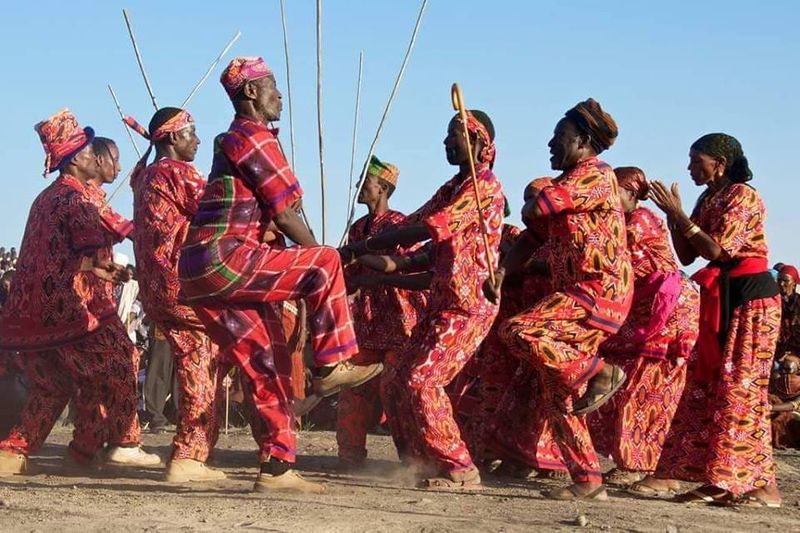
Image Credit: Lake Turkana Cultural Festival
This festival is an absolute spectacle for those who don’t live in Loiyangalani or in the North. Not only will you get to immerse yourself in unfamiliar cultures of the North but you will get to meet and interact with the El Molo – a culture on the verge of extinction.
A Small History of the Lake Turkana Festival
The Marsabit-Lake Turkana Festival first took place in June of 2008 when the Desert Museum was opened in the region. The idea behind it is to promote cross-cultural peace in the region as well as bring its rich cultural heritage to the world.
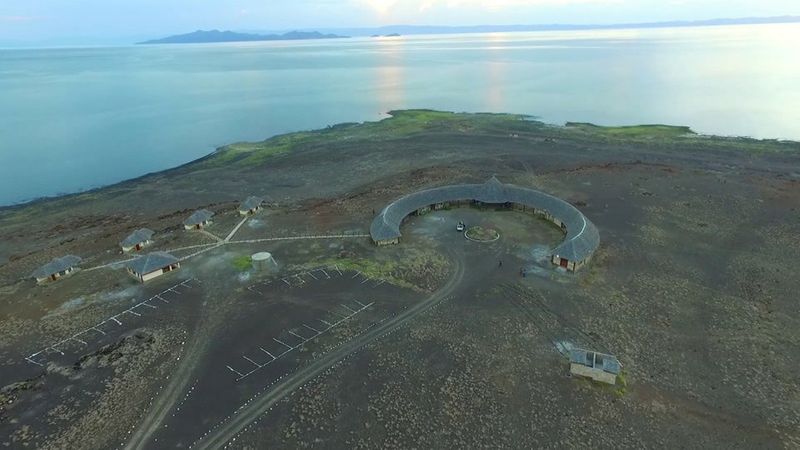
Image Credit: Lake Turkana Cultural Festival
The small town of Loiyangalani was virtually unknown to outsiders but served as a wonderful meeting point for several cultures that the festival seeks to preserve. This 3-day long carnival showcases the rich cultural heritage presented by the:
- El Molo
- Samburu
- Rendile
- Gabbra
- Dasannach
- Turkana
All these people live around the Jade Sea (Lake Turkana). Have you ever interacted with an almost extinct culture? If not, then you should definitely make a point to attend the festival this year.
As Kenya’s smallest and ever fading tribe, the El Molo are a colourful people who make their living entirely off the Lake. In fact, their name “El Molo” loosely translates to “those who eat fish” or “people who make their living from other sources other than cattle”. At least that’s what their Samburu neighbours refer to them as.
Main Attractions at the Lake Turkana Festival
Like most cultural festivals, the Marsabit – Lake Turkana Festival is all about song and dance. There are about 14 different ethnic communities that live in Marsabit county (El Molo, Samburu, Turkana, Dasannatch, Gabbra, Konso, Borana, Waata, Burji, Rendille, Sakuye, Garee and Somali) all of whom take part in the festival.
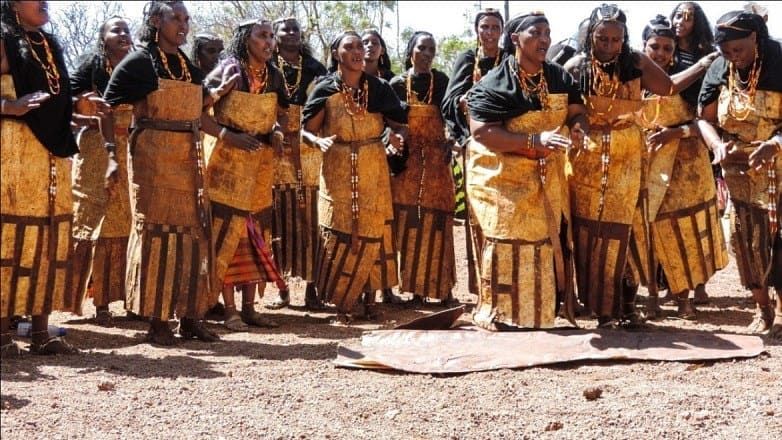
Image Credit: Lake Turkana Cultural Festival
Each community showcases its unparalleled cultural uniqueness mostly through song and dance. Some, however, go above and beyond by showcasing other attractions such as:
- Their traditional hunting gear.
- Their traditional cooking methods and utensils.
- Informal interaction between men and women.
- Boat racing skills.
- Moran racing and wrestling.
The idea behind the festival is for the world to see how these people live and find beauty in their way of life. At the festival, you will get to see traditional dancers, mingle with the El Molo and try some of the most delicious traditional dishes (some are an acquired taste – so, just have that in mind), buy interesting souvenirs and maybe even learn how to say “hello” in a different language. Mostly, however, there will be song and dance.
How to Get to the Lake Turkana Festival
There are several ways to get to the Marsabit-Lake Turkana Festival. You could:
- Choose to fly to Lodwar then hire a car to Loiyangalani but that will cost you upwards of $100 on way.
- Choose to drive to the destination itself (which is the path we recommend if you want to keep your budget below $300)
While there are other routes you can take (through Kitale), this particular writer prefers the Nanyuki route mostly because it’s as scenic as it can get. If you are travelling from Nairobi, you should be prepared to do:
- 141 KM to Nanyuki.
- 308 KM to Loiyangalani.
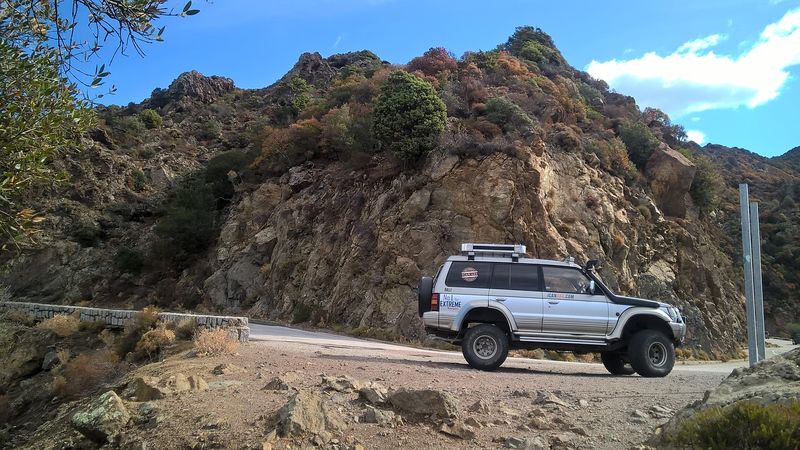
A round trip of about 898 KM (if you don’t take too many detours) which will take you from Nairobi-Nanyuki-Isolo-Laisamis-Loiyangalani and back again. You will definitely need a good 4X4, maybe a couple of friends and love for the open road.
We love this option because you can make the whole thing one big camping trip thus saving money on accommodation. Plus, you get to see Mt. Kenya, Mt. Ololokwe and Archer’s Post along the way. There is a beautiful open country out there and the best way to fully appreciate it is to take a leisurely drive through it all.
Your fuel shouldn’t cost more than $150 total and the remaining $150 can be used on whatever you want:
- Snacks.
- Drinks.
- Park fees (if you intend to camp on any known parks)
- Food.
- Souvenirs and contingencies.
You might have to live like a backpacker and avoid luxurious accommodations but if you have $300 on you then you can actually drive to the Marsabit- Lake Turkana Festival and have a blast all the way through.
Where to Stay During the Lake Turkana Festival
Since we are working with a budget of $300, it would be best to restrict your accommodation options to the numerous camping sites available in the North. Heck, you could even set up your own camp near the festivities as long as you have an understanding with the local area Chief and residents.
However, if you are thinking that maybe you want to upgrade your sleeping quarters to include a “real” bed then you can stay at the Palm Shade Resort; one of Marsabit’s most popular accommodation facilities.
How Much Will It Cost to Attend the Festival?
There are different charges to participate in some of the festival’s activities and you will need to pay for your food, souvenirs, water and tip your service providers but all in all, this shouldn’t cost you too much. Nothing more than $25 every day for the 3-days (if you intend to stay for the three days).
One thing is for sure, this trip is definitely worth taking. Just take a look at this video giving you an idea of how beautiful your road and the open country will be as you head out towards Loiyangalani:
If you have the time and the stamina for it, the festival takes place every year from 13 – 15 June. The weather is almost always perfect and the festivities are always mesmerizing. You will not regret adding this to your bucket list.
Have you ever been to the Lake Turkana Festival? Share your experience with us in the comment section below.